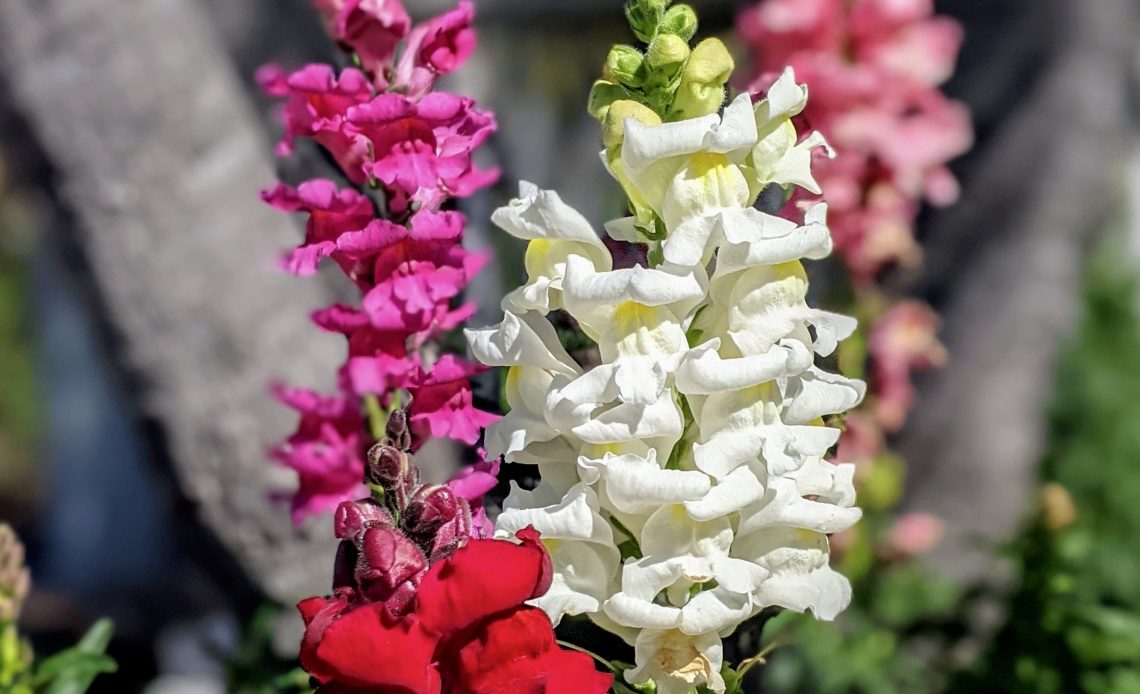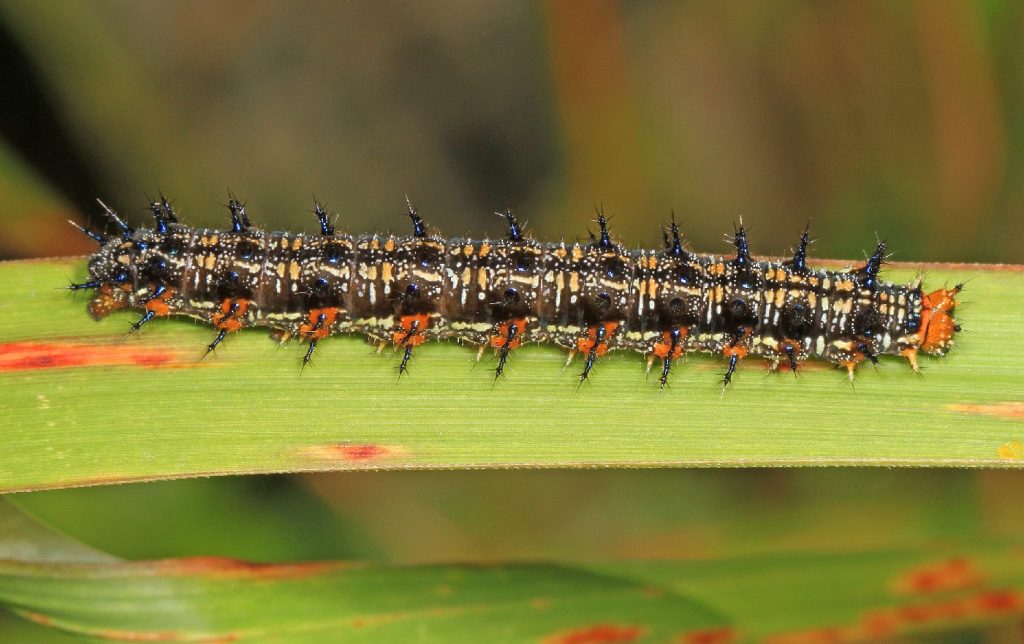

We’re here to help! Wild Yards is a completely free website that is 100% dedicated to helping you create a wildlife-friendly, sustainable yard. Read more
WildYards is reader-supported. When you buy a product through a link on our site, we may earn a comission. Every product is independently selected by our (obsessive) editors and our reviews are unbiased and objective. Read more about our mission or our privacy policy.
Few flowers are more colorful and striking than a garden full of butterflies, unless perhaps it’s a garden full of snapdragons! These spikes of multi-colored, stunning flowers can’t help but attract the eye of any visitor to your garden. But does that include the winged visitor? Will these flowers help attract butterflies to your garden? Do butterflies like snapdragons?
Butterflies love snapdragons. These beautiful blossoms come in a variety of bright colors made to catch the eye of passing pollinators – including butterflies. Not only do the flowers provide ample amounts of nectar for hungry butterflies, but the lush, broad leaves provide an excellent place for females to lay their eggs.
Do snapdragons attract butterflies and hummingbirds?
Both butterflies and hummingbirds are much-beloved by gardeners, and don’t worry – hummingbirds and butterflies can co-exist in your garden. Many gardeners want to know what flowers will attract both of these colorful pollinators as well as wanting to grow more colorful blossoms. So why not get a flower like the snapdragon, that is attractive to butterflies, hummingbirds, and multiple other pollinators?
By the same token, snapdragons have been cultivated in gardens since the 16th century, and for good reason! These hardy plants produce tall spikes of tube-shaped flowers, and various cultivars come in different shades of yellow, orange, pink, purple, and red. These colors are very attractive to hummingbirds and are just the right shape to fit their long, curved bills.
And the same traits make snapdragons very attractive to butterflies as well. Butterflies are also attracted to bright colors, and they find tube-shaped blossoms easy to drink from. Generally, butterflies prefer scented flowers, but they will still investigate flowers they like the look of. And if you prefer fragrant blossoms too, scented cultivars of snapdragons are now available.
Why do butterflies like snapdragon flowers?
Snapdragon flowers are attractive to a lot of insects, including butterflies. While they’re particularly structured for bees – a honey or bumble bee can work its way in between the lips of the flower and have them close shut behind them, hiding them from predators so they can feed at their leisure – this doesn’t mean they’re not attractive to butterflies!
Butterflies love the bright colors and rich nectar of snapdragons. The scented cultivars are even more interesting to them, drawing them in with delicious odors.
One of the most valuable features of snapdragons is that they prefer to bloom in cooler temperatures. This means that they begin to flower in early spring, the same time that the first new butterflies are beginning to emerge.
Snapdragons will also have a second blooming season in early fall. These late blossoms are particularly valuable to monarch butterflies, who make their epic, continent-spanning migration in the fall. In these cooler months, there are fewer flowers to feed on, so anything that blooms late in the year will be highly appreciated by passing monarchs!
Some other butterfly species that you might see visiting your snapdragons are gray hairstreaks, pearl crescents, sachems, swallowtails, and American coppers.
Do caterpillars like snapdragons?
This might be good news or bad news depending on whether you want to display flowers or increase the butterfly population, but caterpillars love snapdragons! In particular, snapdragons are known to be host plants (plants on which adult butterflies lay their eggs and on which the newly hatched caterpillars will feed) for the common buckeye.
The common buckeye is a small but magnificent butterfly with stunning, iridescent eyespots dotting its brown and orange wings. Its range is East of the Rocky Mountains, and like the monarch, it migrates south during the winter. This species breeds throughout the summer and is quite choosy about the flowers on which it lays its eggs!
Like monarchs, common buckeye caterpillars eat plants that give their bodies a bitter taste, which helps them avoid predators, including carnivorous ants. In the case of the common buckeye, they choose plants in the plantain family, which produce a particular chemical called iridoid glycosides. These chemicals not only make the caterpillars taste nasty but also cause them to grow faster and bigger.
Snapdragons are members of the plantain family and produce plenty of these bitter chemicals, and as such, common buckeyes love them. They will lay their tiny, pearl-like, green eggs on the underside of snapdragon leaves, and the resulting caterpillars will feed on the leaves for several weeks before sealing themselves into a chrysalis. If you are lucky enough to see a common buckeye emerging from its cocoon, don’t worry about the red liquid that oozes out with it; butterflies don’t bleed when they hatch.

How do I grow snapdragons?
Snapdragons are primarily an annual, meaning that they need to be replanted every year. They can be purchased as mature plants from garden centers or nurseries or else grown from seed. If you decide to grow your snapdragons from seed, it will take them a couple of months before they are mature enough to bloom, and you should start them indoors and plant them where they will get six to eight hours of full sun each day.
Snapdragons prefer more temperate areas and grow well in USDA hardiness zones 7 to 11. They can tolerate mild frosts and heat, but hard winters and extreme heat will kill them. During the hottest time of the year, they will need regular watering, and this will encourage them to bloom into the fall.
Deadhead your snapdragons regularly to extend the blooming season, and fertilize them monthly. Regular mulching is also beneficial, as it will help suppress any weeds.
If you live in a colder area it’s likely your snapdragons will die over the winter. However, many snapdragon cultivars are prolific self-seeders, and you may not need to re-plant them come the spring!
Snapdragons are vulnerable to a number of pests and diseases. Aphids and flower thrips can be an issue. Larvae of the snapdragon plume moth are particularly dangerous as they will bore into the flower stems and may kill them. Snapdragons are also vulnerable to nematodes in the soil, but you can avoid this by planting them with Tagetes marigolds, which produce a chemical that kills these nematodes. And good news – butterflies love marigolds too!
Finally, snapdragons are particularly vulnerable to fungal infections. Space your plants well apart, keep them well-watered, and make sure to destroy infected leaves and/or plants.
Despite their susceptibility to these issues, snapdragons are strikingly beautiful flowers that will brighten any garden. Bees, butterflies, and hummingbirds all love the snapdragons’ sweet nectar and brilliant colors. And if you’re looking to provide a habitat for butterflies to breed, snapdragons are a fantastic host plant. They’re perhaps a bit more delicate than some other species, but that doesn’t mean they wouldn’t be a great addition to your wild yard.
